Eustoma, also known as the "Irish rose" or "Texas bell", belongs to the Gorechavkov family. A beautiful flower with a variety of colors, capable of preserving cut freshness for up to three weeks, came to Europe from those regions of America where a humid climate prevails. Perennial eustoma, whose velvet texture of inflorescences resembles a rose, will become an adornment of any landscape gardening or window sill in an apartment.
Material Content:
Popular types and varieties
In the natural environment, the genus has more than 600 species, while in culture, only large-flowered eustoma is grown as a garden variety. For the apartment, Russell's eustoma is used. Although still florists are arguing that this is the same species. With varieties, the situation is simpler: they are classified by purpose.
Tall eustoma
High forms of a flower are cultivated in the garden and are used to make bouquets in a cut state.
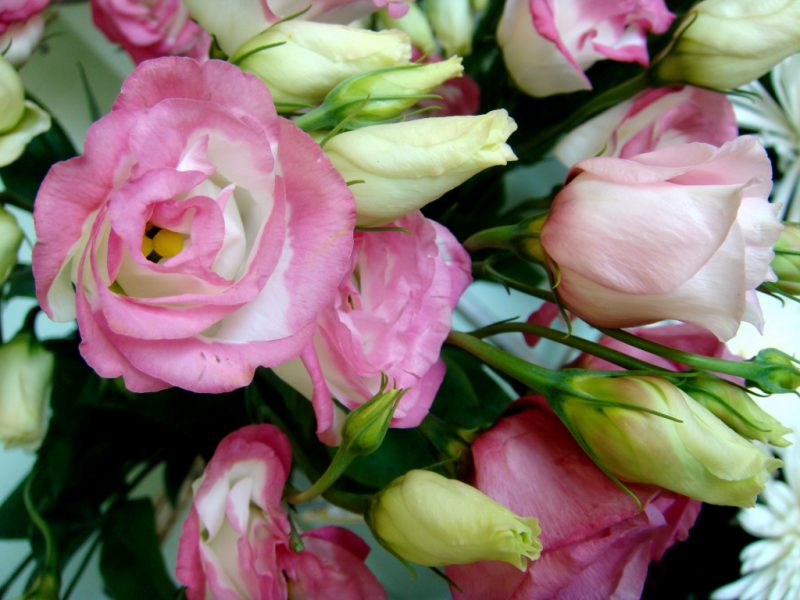
Among the most popular varieties stand out:
- Aurora - a variety with terry inflorescences of blue, blue, white and pink flowers, reaching a height of 120 cm. It is distinguished by the earliest flowering among the other varieties.
- Echo - a variety up to 70 cm tall with plain or bicolor large flowers.
- Heidi is an abundantly flowering variety up to 90 cm high with simple inflorescences in different color variations.
- Flamenco - a variety up to 120 cm tall with simple large inflorescences, characterized by unpretentiousness.
Stunt eustoma
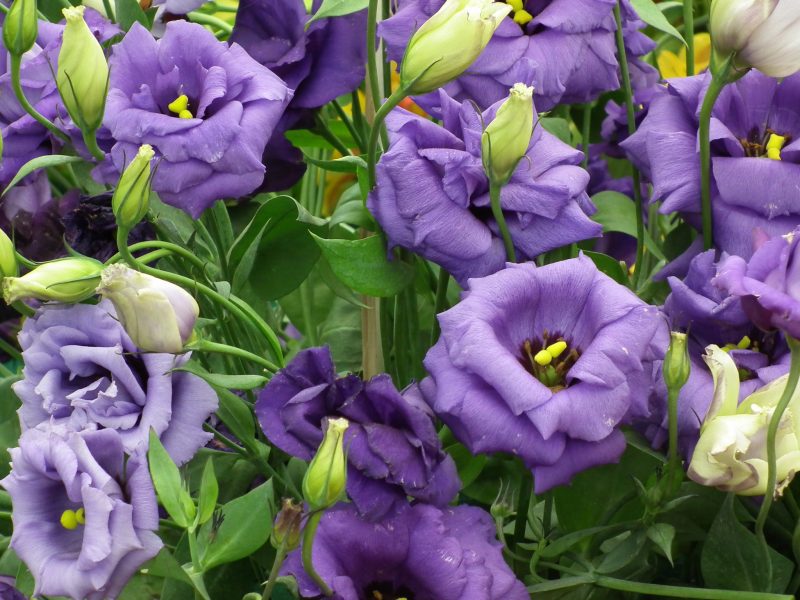
Similar varieties are grown in an apartment environment. Common are:
- Mermaid - a variety up to 15 cm high and simple inflorescences with a diameter of 6 cm, painted in white, blue and pink.
- Little Bell is a flower of similar height with simple spiky flowers of various shades.
- Florida Pink is a pink variety with simple inflorescences that, when flowering, form an even and lush bouquet.
Eustoma perennial - the nuances of growing
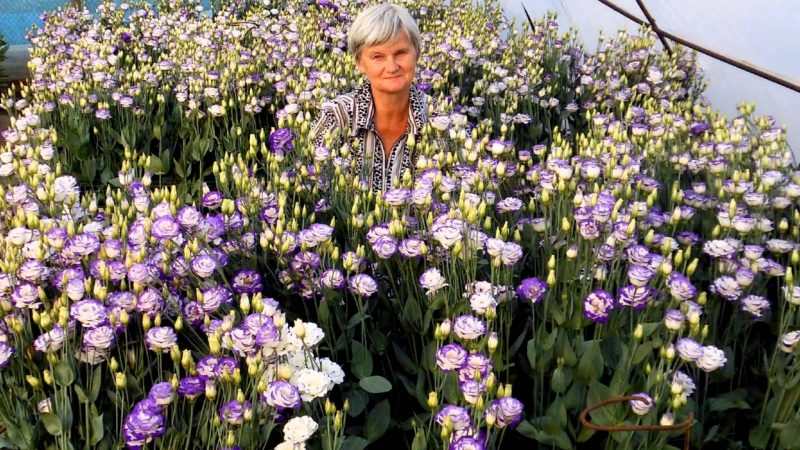
Perennial eustoma cultivation has its own characteristics.
- The plant needs bright lighting.
- The best soil for cultivating a flower is light, well-drained soil.
- Due to the fragility of the roots, the eustoma reproduces only by seed.
- Watering is carried out after the soil surface has dried to a depth of at least 2 cm.
- The plant is transplanted only in extreme cases.
Growing eustoma from seeds
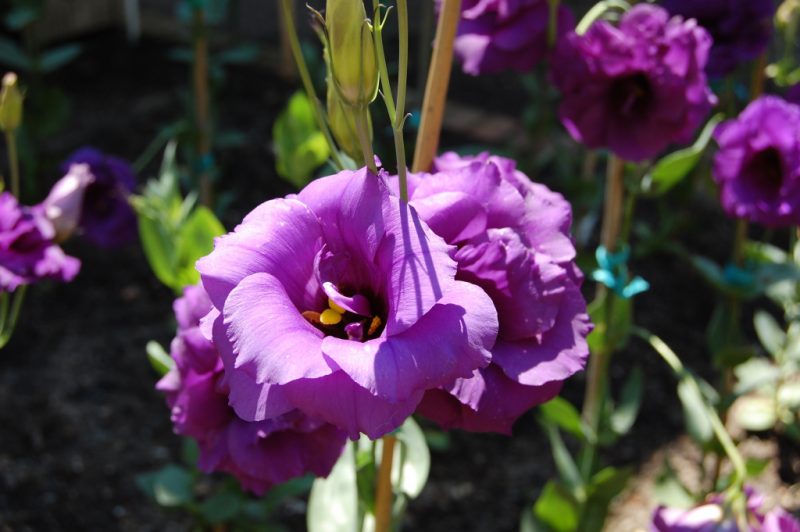
Growing a flower in a seed way is a time consuming and very slow process, in which:
- At the end of winter or early spring, a container for seedlings is prepared and filled with light soil from sheet soil, peat and sand in equal proportions.
- Seeds are evenly distributed over moistened ground without seeding.
- The container is covered with a film and moves to a bright place with a temperature of 20-25 ° C.
- Daily crops are aired and moistened.
- After emergence, the film is removed. and the container is transferred to a cooler room with a temperature of 14-17 ° C, where an artificial light source is installed.
- Due to the slow growth of seedlings, the first leaves appear after 45 days. At this time, seedlings dive into separate pots.
- After the formation of 4 pairs of true leaves, pinching of the apex is performed to provide branching to the plant.
- In late spring, when the threat of freezing frost is over, the eustoma is transplanted into an open ground or an individual pot.
Seedlings in peat tablets
A more convenient method of growing plants from seeds, in which the sowing is carried out in tablets.

- Peat pellets with a diameter of 5 cm are purchased, placed in a container for seedlings and well moistened with warm water.
- After swelling of the tablets, the remaining water from the tank is removed.
- A seed is placed on each tablet with tweezers, which is slightly pressed into it.
- Crops are moistened with a spray gun, covered with glass and moved to a warm place with good natural and artificial lighting.
- After emergence, the glass is removed, and the temperature drops by 5 ° C.
- After the formation of the first true leaflet, a separate tablet with a seedling is moved into an individual cup.
- The following steps are similar to those described in the previous section.
Planting in the garden
When the seedlings are strong enough and night frosts are not expected, you can start planting seedlings in open ground.
Soil preparation and location
To grow a flower in the garden, a well-lit area with diffused light, protected from drafts, is selected. Irish rose prefers light, drained soil with good aeration rates.

Landing rules
- Planting seedlings is carried out in cloudy weather by transshipment.
- Dig holes with a distance of 20 cm from each other.
- Seedlings, together with a lump of earth, are placed in recesses corresponding to the volume of the cups and sprinkled with soil.
- Seedlings, the trunk circle of which is compacted, are covered with glass jars.
- After 2-3 weeks, the protective shelter is removed.
In mid-summer, the flower grower will witness the first flowering of their exotic flowers.
Eustoma perennial - care
It is quite simple to take care of the plant in order to ensure the splendor of the bush and beautiful flowering, if you do not forget about the nuances of growing a crop.
Watering and humidity

In the natural environment, the culture grows in a humid climate, so eustoma does not tolerate prolonged heat and drought.
- Moisturization is carried out by soft defended water under the bush, avoiding contact with leaves.
- The plant needs regular, but moderate watering, in which there will be no stagnation of water.
- Systematic waterlogging, leading to the development of fungal diseases, has a detrimental effect on perennials.
- With lowering temperatures, watering is reduced.
Important! The flower does not need spraying.
Fertilizer and fertilizer

Eustoma needs top dressing during the period of active growth. The introduction of complex fertilizers for flowering plants is carried out twice a month 2 weeks after planting in open ground.
Transfer
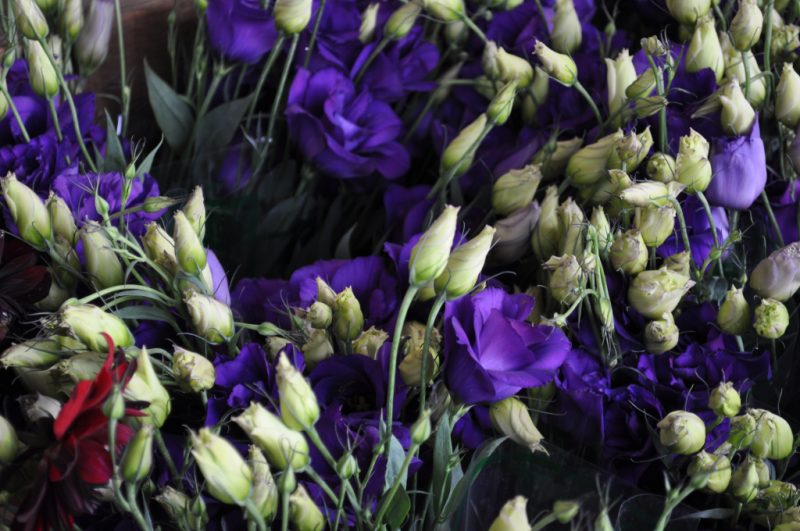
Eustoma is conventionally considered a perennial culture, because it is characterized by poor tolerance of transplants. The procedure is carried out in cases of urgent need by transshipment to minimize the risk of injury to the fragile root system.
Care after flowering
After flowering is complete, when all the inflorescences are wilted and the leaves turn yellow, the stem of the eustoma is trimmed at the level of 2-3 internodes. The flower is placed in a pot and transferred to a cool balcony.
Eustoma wintering
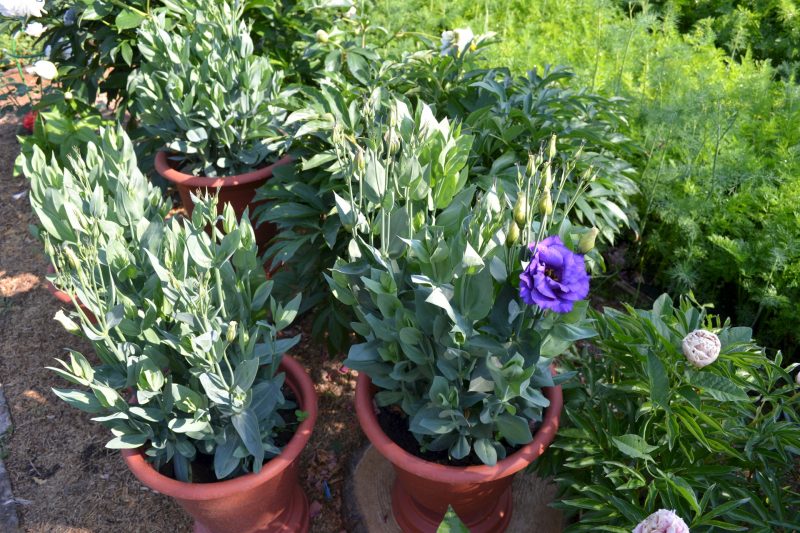
In Central Russia, culture does not winter in the garden, since it is capable of withstanding a temperature drop only to -10 ° C and only for a short time. To garden eustoma successfully wintered, she spends cold time in a pot at home. At this time, a dormant period begins: watering is reduced, feeding is stopped altogether, and the temperature regime is maintained within 10-15 ° C. For warm regions, an option is possible in which the flower is transplanted into an unheated greenhouse, where scarce watering is organized.
Attention! When wintering in the greenhouse, the gardener should be ready in case of severe cooling in a timely manner to cover the plants with spruce branches.
Pest and disease control in the garden
Eustoma, also known as the "bitter rose" due to belonging to the gentian family, is not of particular interest to pests. However, if the culture was still attacked by aphids or whiteflies, it is worthwhile to organize protective measures in the form of spraying the bushes with an insecticidal preparation according to the manufacturer's instructions.
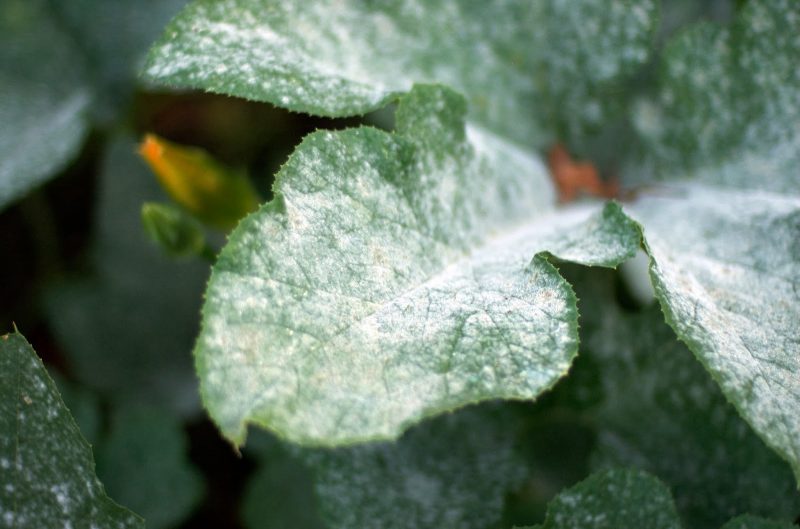
If the Irish rose care schedule is not observed, manifestations of diseases such as gray rot, powdery mildew and fusarium wilting can be noted, with which fungicide spray can easily cope with the initial stages.
Advice! Despite the resistance of the culture to damage by pests and diseases, specimens should be systematically examined to prevent the death of the flower during the intensive development of harmful organisms.
The main problems when growing
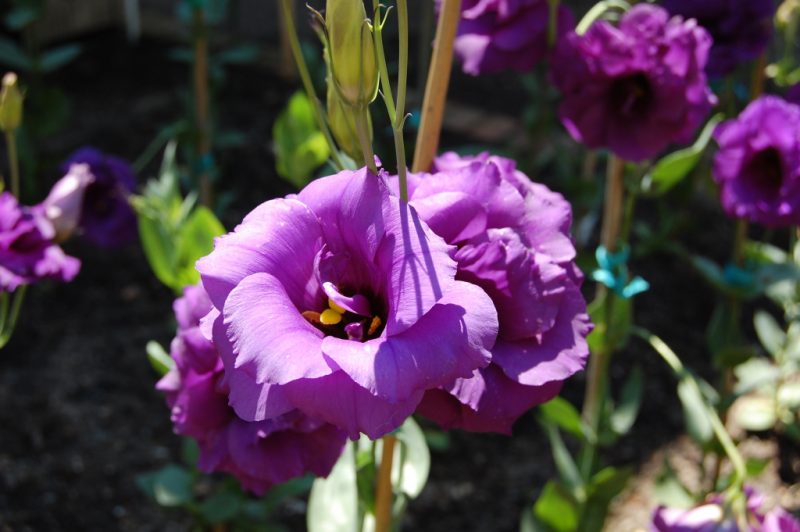
Growing an exotic flower sometimes causes some difficulties that can easily be dealt with when you follow all the recommendations for care.
- The sensitivity of eustoma to soil moisture. Poorly drained soil and systematic overflows, leading to stagnation of moisture, provoke the development of fungal diseases.
- Brittle stems. For some tall varieties, it is necessary to install additional support so that the stems do not bend to the ground and do not break under their own weight.
- The right choice of fertilizers. For the spring period, when the green mass builds up, it is better to use nitrogen-containing fertilizers, and in the phase of bud formation and flowering - phosphorus-potassium complexes.
- Weak bushiness. To stimulate branching and obtain a lush bush, in the seedling phase, the culture needs pinching.
- Exposure to eustoma burns. To prevent burns on the crop, when choosing a place for planting seedlings, you should avoid areas near metal and concrete supports, which, due to heating in the sun, can burn delicate flowers.
So, eustoma flowers are the personification of gentle beauty and sensuality.Regardless of the place of cultivation, whether it be a window sill or a garden, the grower will not be disappointed with the choice of a representative of the exotic flora, on each shoot of which up to 30 inflorescences can be formed.












